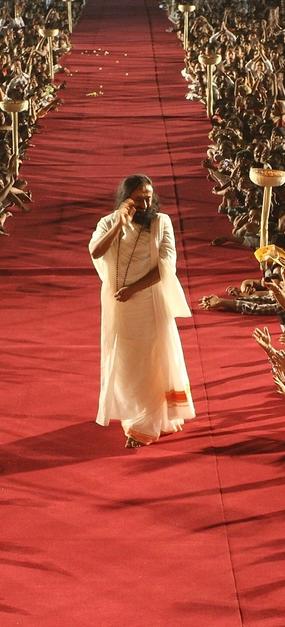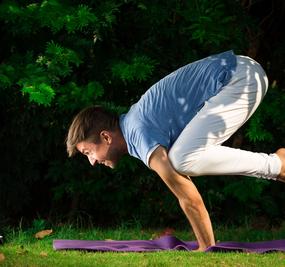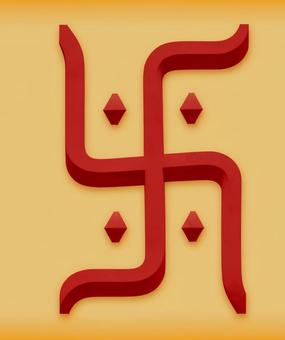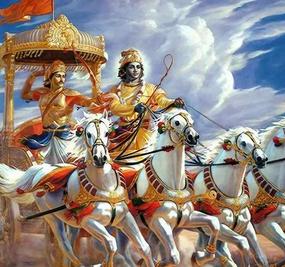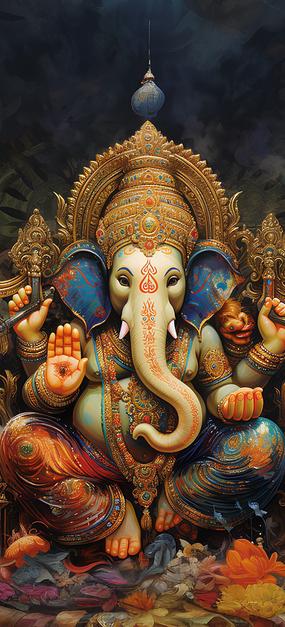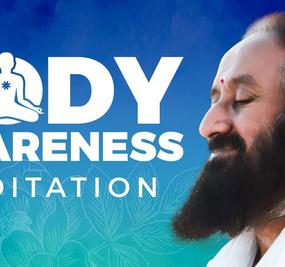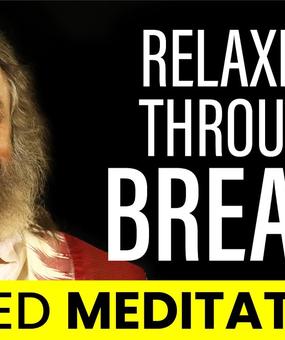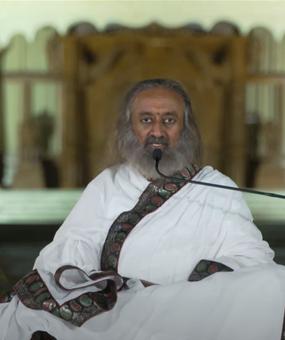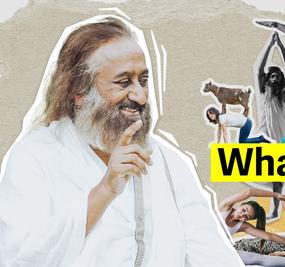Wherever you go today, you hear people talking about the multiple benefits of yoga and attesting to its indispensability in daily life. It is no surprise, considering the significance of yoga in the resolution of physical and mental problems all over the world today. When you hear the word ‘yoga’, chances are that an image of people twisting in, seemingly, impossible poses may pop into your head. Perhaps you never dreamt that any non-acrobat could bend and twist like that!
While yoga asanas are immensely effective and helpful, yoga is more than the asanas or poses it is known for today. It is, also, not just a passing modern fad that evolved over the last few decades. The fact is that it dates back as far as a few millenniums! Yes, incredible as it may sound, yoga goes way back to BC times. So, it is no wonder that so many around the world are attracted to such a time-tested practice.
But, let’s start at the beginning with the very meaning of yoga. What is yoga? What do we mean when we say it is more than asanas? And from when has it been practiced?
What is yoga?
The word yoga was derived from the Sanskrit word yuj which means ‘to join’ or ‘to unite’. This union is not, merely, about your nose touching your knees as you bend to touch your toes! The union referred to is that of your mind with your body. You integrating with your surroundings and nature. And, finally, your individual consciousness with the universal consciousness.
Lord Shiva is considered to be the first yogi; it is believed that He disseminated his knowledge and learning to seven learned men known as the Saptarishis. They, in turn, spread this knowledge in seven different directions covering diverse regions – knowledge that humans can evolve beyond their physical limitations.
We can understand more about this once we understand how the practice of yoga came about. When did it start, and by whom? Let’s delve into the history of yoga.
History of yoga
I. Pre-Vedic and Vedic Period
In the hierarchy of Vedic knowledge, there are four Vedas – Rigveda, Samveda, Yajurveda and Atharvaveda. These are followed by four Upavedas or sub-Vedas – Ayurveda, Arthaveda, Dhanurveda, and Gandharvaveda. Further down the line are six upangas or components – Shiksha, Kalpa, Vyakarana, Nirukta, Chandas, and Jyotisha. These are further classified into six sub-components – Nyaya, Vaiseshika, Sankhya, Mimansa, Vedanta, and Yoga.
The earliest recorded mention of the word ‘yoga’ is in the ancient Indian text, the Rig Veda – this body of knowledge dates back to around 1500 BC! In the Atharva Veda, again (dating to 1200-1000 BC), there is a mention of the importance of the control of breath. It is difficult to pinpoint exact dates because in the beginning, the Vedas were, only, orally passed on from one generation to another. Written records came much later.
However, even before this, in the Indus-Saraswati civilization (dating to 2700 BC), several seals and fossils have been found, with figures performing Yoga Sadhana. This suggests that yoga was known and practiced even in those early stages of civilization.
II. Pre-classical period
The Upanishads took birth in this era. They explain the meaning hidden in the Vedas, elaborating on the workings of the mind and spirit through personal teachings. They espouse meditation and mantra recitation towards the ultimate goal of attaining enlightenment. Out of the 108 Upanishads, there are 20 yoga Upanishads. These talk about different yogic techniques, like pranayama (breathing exercise) and pratyahara (withdrawal of the senses), breathing exercises, sound, and meditation.
III. Classical period (500 BC to 800 AD)
A) Lord Mahavira and Lord Buddha’s teachings formed the early basis for Yoga Sadhana. While Lord Mahavira spoke of attaining salvation and freedom through meditation, Lord Buddha spoke of specific postures and meditation to attain enlightenment.
B) The Bhagavad Gita also came into existence in this period. This text is a dialogue between Lord Krishna (universal consciousness) and Prince Arjuna (human consciousness). Here, the Lord explains the concepts of Dharma, Karma yoga (generous actions), Bhakti yoga (dedicated and caring actions) and Jnana yoga (knowledge).
In the Bhagavad Gita, Lord Krishna says, “Samatvam Yoga Uchyate”– equanimity in the mind is a sign of yoga. Yoga is that ability to remain centered in adverse situations. Whatever takes us back to our original, joyous and harmonious nature is yoga.
C) Some verses of the Mahabharata dating to 300-200 BC also mention terms described by Sage Patanjali, such as vichara (subtle reflection), and viveka (discrimination). Some of the goals of yoga are described as the separation of self from matter, perceiving Brahman everywhere, entering into the Brahman state and uniting the individual atman with the universal Brahman.
D) Maharshi Patanjali, considered the Father of Yoga, was the first one to systematize the practices of yoga in, what is believed to be, the second century BC. Through his Yoga Sutras, he disseminated the meaning of yoga, and the knowledge it has to offer. This yoga was called Raja yoga. He formulated the Astanga yoga or the eight limbs of yoga, which included yamas, niyamas, asanas, pranayama, pratyahara, dharana, dhyan, and samadhi.
- Karma yoga – the path of action or activity
- Bhakti yoga – the path of devotion
- Jnana yoga – the path of inquiry
- Raja yoga – the path of introspection
- Hatha yoga – the path of balancing the physical, mental and pranic layer in the body
Elements of Patanjali’s Yoga Sutras were used as part of the finger movements in nata dances. These were later incorporated in martial arts.
Commentaries on the Yoga Sutras by Veda Vyasa were also written at this time. Here, he has
explained the relationship between the yoga school of philosophy and the Samkhya philosophy, one of the six systems of Indian philosophy.
This period emphasized the importance of the mind in yoga.
IV. Post-classical period
In this era, many sages and philosophers such as Adi Shankaracharya contributed to the development and continuation of Raja Yoga and Jnana yoga, adopting and building upon the teachings and techniques of yoga. With his teachings, and yogic rituals, like the Jnana Yoga, one can achieve Nirvana or liberation. Additionally, meditation was also considered vital to help clear the mind.
Tulsidasa and Purandaradasa also contributed to the science of yoga. Hatha yoga was popularized in this period. Most of the asanas that we practice today are part of Hatha yoga.
V. Modern Period (1700 AD to 1900 AD)
Swami Vivekananda was largely responsible for the spread of yoga to western societies.
Here, there was much focus on physical well-being. Raja yoga was further developed by Ramana Maharshi, Ramakrishna Paramahansa, BKS Iyengar, K Pattabhi Jois, Paramhansa Yogananda, and Vivekananda. Yoga spread to the West in the mid-nineteenth century. Vedanta, Bhakti and Hatha yoga flourished at this time.
Such was the long and illustrious journey that yoga undertook to reach the 21st century! It has had various contributors and undergone many changes. Despite all this, the essence of yoga remains becoming one with your self, spirit and the world around you.
Ancient vs modern perspective
In olden times, people lived lives that were intertwined with nature. They were in their natural state and evolved in that state. There was an understanding of the symbiotic relationship between the body and the mind. That only when both are in communion are bends and twists possible. To achieve this, control of breath and self-realization are important.
The idea of using yoga for treatment of diseases, physical fitness and to achieve freedom from stress is a modern, and rather, superficial perspective. In ancient times, yoga was not just a means to remove diseases. For instance, the emphasis on hygiene and cleanliness was present in ancient times as well. But, this did not refer to only brushing, washing and general morning ablutions. It included keeping your mind, and by extension, your thought process also, pure and clean. In other words, it led to all-round wellness.
Like a flower bud, human life has the potential to blossom fully. Blossoming of human potential to fullness is yoga.
~ Gurudev Sri Sri Ravi Shankar
Helping man to flourish completely is yoga. Helping the individual potential to blossom to its fullest is yoga. For this, all aspects of the individual – physical, mental, spiritual, intellectual, and emotional aspects have to be addressed. Just treating the body would be a symptomatic approach that will, eventually, lead to other problems not far down the road to recovery.
Become a registered yoga teacher
200H Yoga Teacher Training
Hybrid Program (Online + Residential)
Online: May 27 - Jun 30,In-Person: Jul 7 - Jul 14
Apply Now!Become a registered yoga teacher
200H Yoga Teacher Training
Hybrid Program (Online + Residential)
Online: May 27 - Jun 30,In-Person: Jul 7 - Jul 14
Apply Now!More than asanas
Today, our exposure to yoga is largely restricted to yoga asanas. This is why we associate yoga with flexibility and fitness.
Remember that people were sitting on the floor in yoga asanas as a matter of daily life. Today, we need to work our way into a padmasana or lotus pose! Correct posture and meditative state were a way of life that modern living has deprived us of. That is why poses are so popular today. But, now you know that yoga was not meant to be asanas in isolation.
Asanas are, undoubtedly, a very essential step in the process of overall enlightenment. However, they are not the be all and end all of all that yoga stands for. Asanas are simply, ONE of the eight limbs of yoga. They are a necessary part of the preparatory process to enable the body to enter a meditative state and sustain higher levels of energy.
Yoga helps you realize that you are one with the universe around you i.e. your existence is not separate from the world around you. Once you attain this state of awareness, you will be liberated from the sufferings of the world, and achieve a control over your body, mind, spirit, and even, your destiny. This path to self-realization and actualization is the true aim of yoga.
This profound spiritual meaning of yoga is now being recognized globally as the United Nations has named June 21st as International Yoga Day – a day to assign this ancient practice its rightful place as a way of life that engenders peace, harmony and universal integration.
(Based on inputs from Meena Waghray, faculty, Art of Living)



